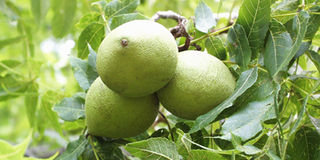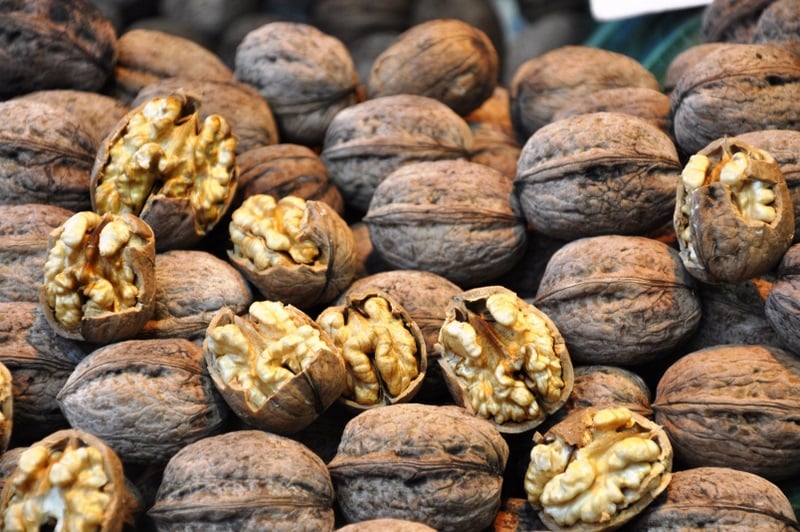Walnut: The new wonder crop for Ugandan farmers

What you need to know:
- Plantation layout is crucial to future ease of management operations. Rows must be perfectly straight in at least one direction to facilitate mowing, spraying and other cultural operations.
Since the spread of none communicable diseases related to heart, joint tissues and blood infections have become rampant in Africa including Uganda, experts suggest the best method to curb them is to consume healthy food.
This therefore involves consumption of certain types of plants which contain food nutrients that are rich in building the body and creating good immune system.
Some of these plants are mainly grown in the developed countries but can also thrive in the tropics including Uganda.
One such a crop is walnut tree species with its scientific name as Juglens regia belonging to the walnut family.
Background
The walnut tree produces nuts which are rich in omega-3 fats and they contain higher amounts of antioxidants than most other foods. Scientists say consuming walnuts may improve brain health and prevent heart disease and cancer.
It is believed to have originated in the Mediterranean region and Central Asia. It has been part of Human diet for thousands of years.
Today the nut trade continues to be a well-established, ordered and structured business including in supermarkets in and around Kampala.
Walnuts are mostly often eaten as a snack but can also be added to salads, pastas, breakfast cereals, soup and baked confectionaries.
They are also used to make walnut oil which is an expensive culinary oil frequently used in salad dressings.
In Africa, the African walnut is well known in farmer fields in West and Central Africa. Besides its nutritious seed which can be eaten raw or cooked or sold for cash, cocoa farmers grow the vine for the partial shade its high canopy provides to their cocoa orchards, protecting them from sunshine.
Agronomy
Tree propagation
In the wild, walnut trees are propagated by seeds however in commercial walnut orchards, the trees are propagated by grafting or budding scions in rootstocks that have already been planted in the field.
Professional walnut growers benefit from a tree that is a combination of two different plant tissues, the rootstock and the scion.
The rootstock is the lower part of the tree and produces the root system. The scion produces the upper part of the tree and of course determines nut’s characteristics.
Once the seeds are grafted, they are left to grow in a nursery bed and this may take between three and four months for them to establish roots for transplanting.
Planting
It is important for farmers to plough the land early and wait for the seedlings to be planted at the onset of the rain season to avoid them for drying up.
It must be emphasised that cultivation will be required several times during each growing season when weed height reaches six inches or so. The area cultivated and duration of weed control should be the same as described with herbicides.
Bare root seedlings can be planted with a planting bar, chain saw auger, tree planting machine, or shovel. For the landowner establishing a small plantation, a planting bar is an excellent investment.
Seedlings often require root pruning before planting. Long lateral roots that will not fit in the hole without curling or a taproot too long for the planting hole must be cut back. Taproots should not be pruned to less than eight inches.
Recommended spacing for walnut plantations is 12 by 12 feet and 300 trees per acre must be maintained. The average walnut tree starts to produce nuts at an age of eight to 0 years.
Mulching
Weed control may be accomplished by organic mulches such as used leaves, hay, straw, bark, chips and sawdust among others. This should be replaced frequently to avoid pests from breeding in the field.Three potential methods of weed control are available to most growers and they include herbicides, cultivation, and mulches.
At the present time, the only herbicide legally registered for use on black walnut is Roundup a relatively expensive herbicide that kills all green plants. Roundup can be applied by backpack sprayer.




